Life Cycle
Broadwinged katydid females lay eggs in a row on citrus leaf edges. The eggs are oval, brown or gray, and laid along the edge of the leaf. Eggs are visible on the leaf surface. Nymphs closely resemble adults.
Adult broadwinged katydids are 2 to 2.5 inches long and bright green. Their threadlike antennae measure longer than the body. The bright green color of katydids helps them conceal among citrus leaves.
Damage
Katydidscausefoliardamage.Likegrasshoppers, theyleaveleafedgesnotchedandjagged.Katydidsalsofeedonfruit,leaving large smooth or sunken areas on fruit surfaces.
Even though they are common throughout Florida, katydids rarely cause extensive damage to citrus. Younger trees are more susceptible to damage and defoliation by katydids than are older trees. Nurseries and young groves may experience occasional population problems.
High katydid populations are most common from June through September.
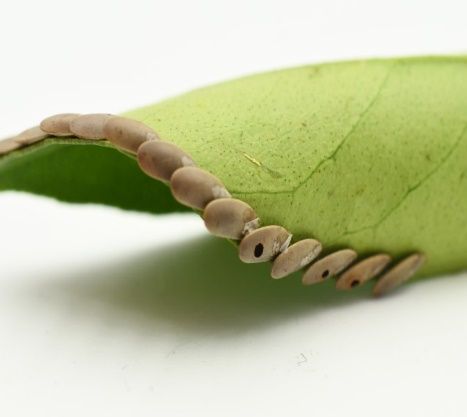
Credit: K. L. Ray, UF/IFAS
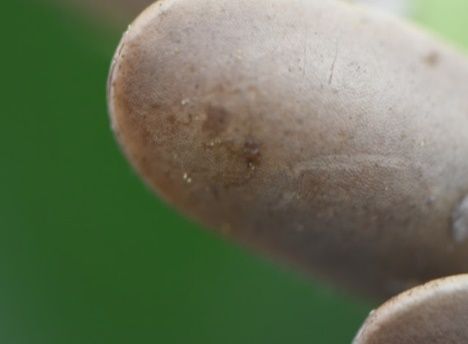
Credit: K. L. Ray, UF/IFAS
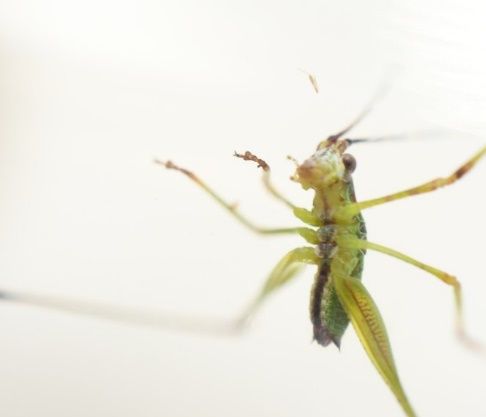
Credit: K. L. Ray, UF/IFAS
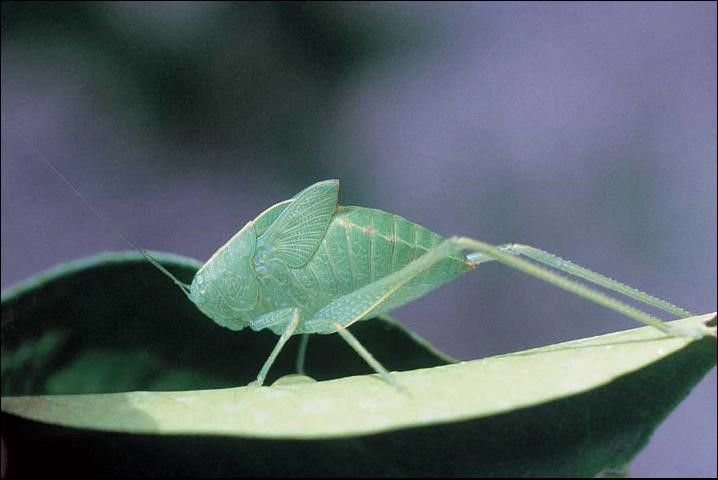
Credit: UF/IFAS CREC
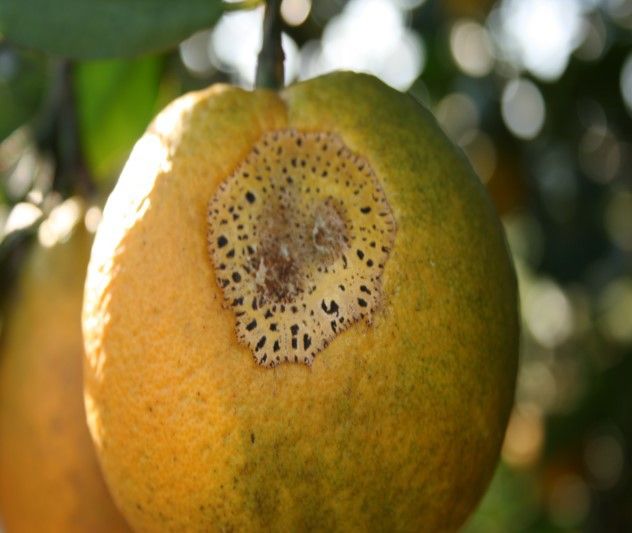
Credit: J. D. Burrow, UF/IFAS